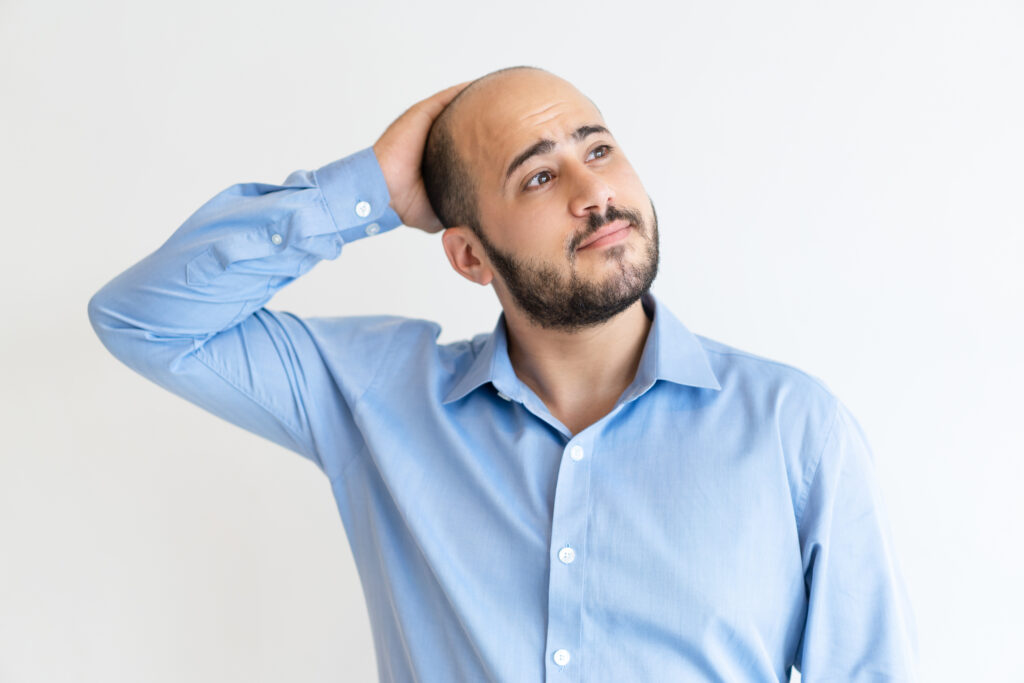Alopecia areata is more than just hair loss—it’s an unpredictable, often emotionally challenging autoimmune condition that affects millions worldwide. While it’s not life-threatening, its effects on confidence and self-image can be profound.
Let’s break it down, understand its causes, symptoms, and treatment, and debunk some common myths surrounding this condition.

Understanding the Basics
Definition and Classification
Alopecia areata is an autoimmune disorder where the immune system mistakenly attacks hair follicles, leading to hair loss—often in round, smooth patches. It’s categorized into:
- Alopecia Areata (patchy) – Most common form with coin-sized bald spots.
- Alopecia Totalis – Complete loss of scalp hair.
- Alopecia Universalis – Total body hair loss.
Difference Between Alopecia Areata and Other Hair Loss Types
Unlike male or female pattern baldness, which is often genetic and gradual, alopecia areata is abrupt and patchy. It’s not related to age or hormones and doesn’t follow a predictable pattern.
Who Is at Risk?
Alopecia areata can affect anyone, but it’s more common in:
- People under 30
- Those with a family history of autoimmune disorders
- Individuals with conditions like thyroid disease, vitiligo, or type 1 diabetes
Causes and Triggers
Autoimmune Connection
The primary culprit? Your immune system. It confuses hair follicles as invaders and attacks them, causing inflammation and halting hair production.
Genetic Predisposition
If someone in your family has alopecia areata or another autoimmune disease, your chances of developing it increase significantly.
Environmental and Lifestyle Factors
Stress, infections, or even toxins may act as triggers. However, there’s no single proven external cause—it’s a mix of internal and external influences.
Symptoms and Early Signs
Patchy Hair Loss
You might first notice small, round patches of hair missing from the scalp or beard. The skin in these patches looks smooth—not scaly or inflamed.
Nail Changes
Ridging or pitting in fingernails and toenails often accompanies alopecia areata. These subtle signs can offer early clues.
Psychological Impacts
Hair loss can be emotionally devastating. Many individuals grapple with anxiety, depression, or social withdrawal. This isn’t merely about appearance; it deeply affects one’s identity and confidence
How is Alopecia Areata Diagnosed?
Visual Examination
Dermatologists usually recognize it through a simple scalp inspection, especially if the pattern of hair loss is distinctive.
Scalp Biopsy
In rare or unclear cases, a scalp biopsy may be done to rule out other conditions like fungal infections or lupus.
Blood Tests for Autoimmunity
Doctors might recommend thyroid function tests, ANA tests, or screenings for other autoimmune diseases.
Treatment Options
Topical Treatments
- Minoxidil (Rogaine): Commonly used, but works better in mild cases.
- Anthralin: It is a cream with a tar-like consistency that affects the immune activity in your skin.
Oral Medications
- Immunosuppressants like methotrexate or cyclosporine may be used in severe cases, though with caution due to side effects.
Corticosteroid Injections
This is a frontline treatment for patchy alopecia areata. Steroids reduce inflammation at the follicle level and help restart hair growth.
Light Therapy and Emerging Options
UV light therapy and JAK inhibitors (like tofacitinib and ruxolitinib) show promise but are still being studied and monitored for safety.
Natural Remedies and Lifestyle Support
Diet and Nutritional Support
Nutrient deficiencies can worsen alopecia areata. Focus on foods rich in:
- Zinc
- Iron
- Biotin
- Omega-3 fatty acids
Stress Management Techniques
Yoga, meditation, journaling, and therapy can help manage stress—a known trigger for flare-ups.
Essential Oils and Scalp Massage
Some find relief using oils like:
- Peppermint oil
- Rosemary oil
- Lavender oil
Massaging the scalp can improve circulation and provide relaxation.
Living with Alopecia Areata
Coping Strategies
- Join a support group (online or offline).
- Speak with a counselor or therapist.
- Educate friends and family to avoid awkward conversations.
Support Groups and Mental Health
Alopecia Areata Foundation and similar organizations offer invaluable support, resources, and even free wig programs.
Wigs, Hairpieces, and Styling Tips
Wigs, hats, or scarves can help rebuild self-confidence. Choose breathable, high-quality materials for comfort and style.
Common Myths About Alopecia Areata
- Myth: It’s caused by poor hygiene.
Truth: It’s an autoimmune issue, not a cleanliness problem. - Myth: Hair loss is permanent.
Truth: Hair often regrows, though it may fall out again. - Myth: Only adults get it.
Truth: Children and teens are frequently affected. - Myth: There’s no treatment.
Truth: Many effective therapies exist, though results vary.
Prevention and Prognosis
Can You Prevent It?
Since it’s autoimmune-based, there’s no surefire prevention. However, leading a balanced life, reducing stress, and supporting immune health may reduce flare-ups.
Does Hair Grow Back?
Yes! In many cases, hair grows back within a few months, though it may be white or fine at first. Unfortunately, relapses are common.
Final Thoughts
Alopecia areata is not just about losing hair; it’s a journey where individuals discover resilience, strength, and often regain their confidence. With growing research and better treatment options, there’s hope and support at every stage. If you’re navigating alopecia areata, know you’re not alone—and better days (and hair days!) can absolutely lie ahead.
FAQs
No permanent cure exists, but treatments can manage symptoms and promote regrowth.
Not at all. It’s an autoimmune disorder, not a viral or bacterial condition.
Stress doesn't directly cause it, but it can activate or intensify the symptoms
Some natural oils, diet changes, and stress-relief practices may support hair regrowth alongside medical treatments.
Yes, in some cases, it can cause hair loss on the eyebrows, eyelashes, or other body areas.